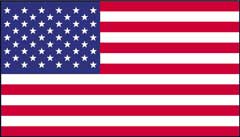 United States FULL
United States FULL Connecticut FULL
Connecticut FULLWhat are housing choice vouchers?
The Housing Choice Voucher program is the federal government's major program for assisting very-low-income families to afford decent, safe, and sanitary housing in the private market. Participants are able to find their own housing, including apartments, townhouses, and single-family homes. The participant is free to choose any private rental housing that meets the requirements of the program. Housing Choice Vouchers are funded through the federal Department of Housing and Urban Development (HUD) and are administered in Connecticut by over 40 public housing agencies (PHAs) and statewide by the Connecticut Department of Housing (DOH) and its agent, J. D’Amelia & Associates, LLC. (JDA). JDA subcontracts operation of the DOH HCV program to six local PHAs and one Community Action Agency in the state. To find the subcontractor or customer service office that serves the town you live in, follow this link.
A family that is issued a housing voucher is responsible for finding a suitable housing unit of the family's choice where the owner agrees to rent under the program. This unit may include the family's present residence. Rental units must meet minimum standards of quality and safety as established by HUD. A housing subsidy is paid by the PHA to the landlord directly on behalf of the participating family. The family pays the difference between the actual rent charged by the landlord and the amount subsidized by the HCV program.
Who is eligible?
Eligibility for a housing voucher is determined based on the household's annual gross income and the PHA's definition of a family. Participation is limited to U.S. citizens and specified categories of non-citizens who have eligible immigration status. Generally, the family's income may not exceed 50 percent of the median income for the county or metropolitan area in which the family chooses to live. [By law, a PHA must provide 75 percent of its vouchers to applicants whose incomes do not exceed 30 percent of the area median income.] Median income levels are published annually by HUD and vary by location within the state. To review the income guidelines, follow this link.
During the application process, information on family composition, income, and assets will be collected by the PHA. The PHA will verify this information and use it to determine the family's eligibility and the amount of their housing assistance payment. If the PHA determines that a family is eligible, the PHA will place the family on a waiting list. Once a family is chosen from the waiting list, the PHA will contact them and issue them a housing voucher.
How does a family apply?
The Department of Housing will re-open the waiting list to accept applications when most people on the waiting list have been served. When the list is about to be opened, a notice and pre-application form will be placed in local newspapers and media outlets as well as on the DOH website. The waiting list currently is closed.
What special types of Section 8 vouchers are available?
There are several special programs within Section 8. In addition to meeting any special requirements noted below, applicants must also be determined eligible by the PHA for Section 8 rental assistance. Those special programs offered through DOH/JDA are:
Family Unification Program (FUP)
Through the linkage of DOH and the Department of Children and Families (DCF) with the Section 8 contract administrator (JDA), the Family Unification Program (FUP) provides a comprehensive array of services to certain families. These families have been identified and referred to the Section 8 contract administrator by DCF as families for whom the lack of adequate housing is a primary factor in the imminent placement of the family’s child or children in out-of-home care, or in the delay of discharge of a child or children to the family from out-of home care. They are placed on the waiting list until a FUP voucher is available.
Mainstream Housing Opportunities Program for Persons with Disabilities
The Section 8 Mainstream Housing Opportunities Program for Persons with Disabilities enhances the State of Connecticut’s continuing efforts to provide safe, decent, sanitary housing to persons with disabilities. Persons with disabilities may apply when the Section 8 waiting list is open. The Section 8 waiting list identifies applicants who meet Mainstream eligibility requirements.
Nursing Facility Transition Preference (MFP)
The Department of Housing, working in collaboration with Connecticut Association of Centers for Independent Living (CACIL), will make available Section 8 Housing Choice Vouchers specifically for persons with disabilities transitioning from licensed nursing facilities (as defined in SEC 1919. [42 U.S.C. 1396r]) into a private rental unit. If a person with a disability who is on the Section 8 waiting list and who resides in a licensed nursing facility develops a service plan and is determined eligible by the PHA to receive a housing choice voucher, the person will be invited to participate in the program in accordance HUD regulations and other program requirements.
The waiting list -- what is it and how does it affect me?
Because the demand for housing assistance always exceeds the limited funds available to operate the Section 8 programs, long waiting periods are common. For example, DOH closes its waiting list when more families are on the list than can be assisted in the near future. DOH only re-opens the waiting list to accept applications when most people on the list have been served. When the list is about to be opened, a notice and pre-application form will be placed in local newspapers as well as on the DOH website.
Housing Vouchers -- how do they function?
The HCV program leaves the choice of housing to the individual family. A very-low-income family selected by the PHA to participate is encouraged to consider several housing choices to secure the best housing for its needs. A HCV holder is told the unit size for which the family is eligible, based on family size and composition. The rental unit selected by the family must meet an acceptable level of quality and safety before the PHA can approve the unit. When the voucher holder finds a unit that it wishes to occupy and agrees with the landlord on terms of the rental agreement, the PHA must inspect the dwelling and determine that the rent requested is reasonable.
The PHA determines a payment standard that is the amount generally needed to rent a moderately-priced dwelling unit in the local housing market. This payment standard is used to calculate the amount of housing assistance a family will receive. The payment standard does not limit the amount of rent a landlord may charge, but it does limit the amount of rent a tenant may pay. A family receiving a housing voucher can select a unit with a rent that is below or above the payment standard. The housing voucher family must pay 30 percent of its monthly adjusted income for rent and utilities. If the unit rent is greater than the payment standard, the family is required to pay the additional amount. By law, whenever a family moves to a new unit where the rent exceeds the payment standard, the family may not pay more than 40 percent of its adjusted monthly income for rent for the first year.
The PHA calculates the maximum amount of housing assistance which a family may receive. A family typically pays between 30 and 40 percent of its monthly income on rent and utilities. The maximum housing assistance is generally the lesser of two amounts: 1) the payment standard minus 30 percent of the family's monthly adjusted income, or 2) the gross rent (that is, the rent to the owner plus the average utility costs) for the unit minus 30 percent of monthly adjusted income.
Can a family move and continue to receive housing choice voucher assistance?
A family's housing needs change over time with changes in family size, job locations, and for other reasons. The HCV program is designed to allow families to move without the loss of housing assistance. Moves are permissible as long as the family notifies the PHA ahead of time, terminates its existing rental agreement within the rental agreement requirements, and finds acceptable alternate housing. Under the HCV program, new voucher holders may choose a unit anywhere in the United States if the family lived in the jurisdiction of the PHA issuing the voucher when the family applied for assistance. Those new voucher holders not living within the jurisdiction of the PHA at the time the family applied for housing assistance must initially rent a unit within that jurisdiction for the first twelve months of assistance. A family that wishes to move to another PHA's jurisdiction must consult with the PHA that currently administers its housing assistance to verify the procedures for moving.
Roles - the tenant, the landlord, the PHA and HUD
Once a PHA approves an eligible family's housing unit, the family and the landlord sign a rental agreement. At the same time, the landlord and the PHA sign a housing assistance payments (HAP) contract that runs for the same term as the rental agreement. This means that everyone, tenant, landlord and PHA, has obligations and responsibilities under the HCV program. Those obligations and responsibilities are:
DOH's Section 8 waitlist is currently closed. Please register at cthcvp.org to be notified when any Section 8 program in the State opens its waiting list.
 United States FULL
United States FULL Connecticut FULL
Connecticut FULL